Autobiography Of Frederick Douglass Sparknotes
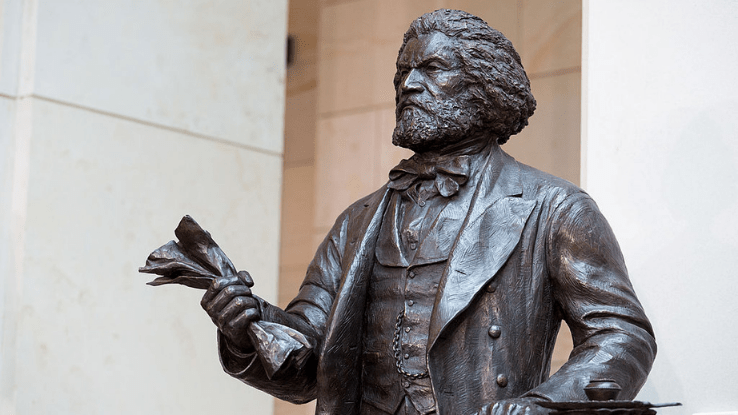
Few historic figures were as integral to the Abolitionist movement as Frederick Douglass. Originally born into slavery, Douglass taught himself to read, write, and eloquently speak English language. His passion for learning burned brighter than the bigotry and ignorance surrounding him. Douglass would later gain his freedom through his wit and volition and help reshape America during one of its darkest periods.
Of course, this brief summary of Douglass' life doesn't do his incredible story justice; his journeying from a victim of oppression to a visionary was rife with trials and tribulations. Nosotros're delving into the history of Frederick Douglass to honor his legacy and commemorate Black History Month. Douglass' memoir,Narrative of the Life of Frederick Douglass, an American Slave, will serve every bit the basis for much of the data presented in this commodity.
Early on Life as a Slave
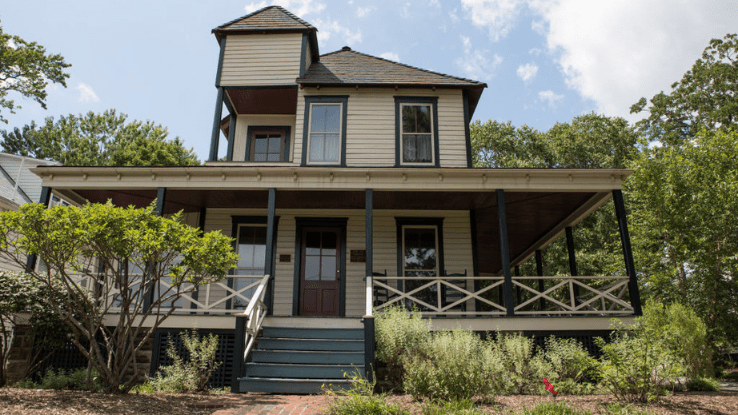
Frederick Augustus Washington Bailey was born into slavery in Talbot County, Maryland, to Harriet Bailey and an unknown male parent. While he did not know the exact date of his birth, Douglass estimated that it was in February of 1818 and celebrated it on February 14th.
Douglass grew up on Home Hill Farm and, like many young slaves at the time, was separated from his mother at a young age. He was given into the care of his maternal grandmother, Betsey Bailey, who raised him until he was v or six. Too, similar well-nigh of his peers, Douglass grew up illiterate. Harriet was one of the few field easily who knew how to read, which helped inspire Douglass subsequently in life.
In 1826, Douglass was sent to live with Hugh and Sophia Auld to accept care of their son. Sophia taught Douglass the basics of English and how to read alongside her son, merely Hugh quickly ended these lessons. Douglass did not let this setback to finish him; instead, he secretly educated himself past tracing letters in onetime schoolbooks and learning words from poor White children. Douglass also purchased a Webster's spelling book, a journal, and a copy of the Columbian Orator novel.
A turning point for Douglass came when he was leased to Edward Covey in 1833. Covey was a notorious "slave breaker" who berated and shell any slaves assigned to him to pause them downwardly. When he attacked Douglass 1 twenty-four hours with the aforementioned intent, Douglass defended himself, resulting in a two-hour-long fight. Douglass won the battle and instilled a sense of dread in Covey, who never touched him again. The battle also solidified Douglass's want for freedom and determination to escape.
Douglass attempted to escape slavery several times. In 1834, he organized an escape plan with other slaves on William Freeland's farm. The plot was foiled, and authorities caught Douglass and sent him back to the Aulds, where his journey to freedom was just getting started.
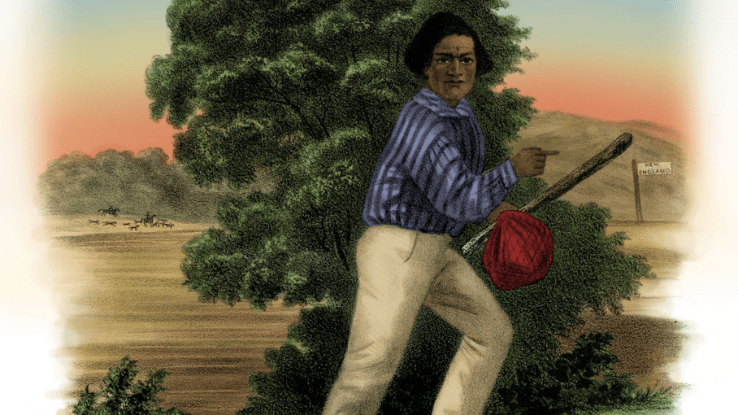
During this period, the Aulds hired Douglass out to shipyards to learn a trade. Over the next few years, Douglass became a skilled transport caulker (a worker who waterproofs vessels). He too became much more involved in the Blackness community, coming together and mingling with many people, including Anna Murray, who he would subsequently marry.
While he had a modicum of liberty, Douglass wanted to be free in its entirety. His opportunity came one day in September of 1838. After an atmospherics with Hugh Auld, Douglass bearded himself every bit a sailor, escaped from Baltimore by train, sailed to Philadelphia via steamboat, and so traveled to New York past train, where he was married to Anna.
Douglass and Anna initially kept a low profile in New York. To avoid the many slave catchers in the city, Douglass changed his proper noun from Frederick Bailey to Frederick Johnson. Fifty-fifty that wasn't enough, and the couple moved to New Bedford, Massachusetts. In that location, Douglass attempted to observe piece of work as a transport caulker, only discriminatory laws and racist coworkers drastically reduced his employment prospects and forced him to work as a common laborer instead.
The then-Johnsons lived with another Blackness couple, Nathan Johnson and his married woman, Mary "Polly" Johnson. This couple proposed the surname Douglass after Sir Walter Scott'due southThe Lady in the Lake poem, a suggestion that Douglass jumped on.
The now officially christened Frederick Douglass learned of the Abolitionist Motility via William Lloyd Garrison'due south paperThe Liberator. In 1841, Douglass visited a convention held by the Massachusetts Anti-Slavery Society and joined after delivering a rousing speech.
Douglass' Career
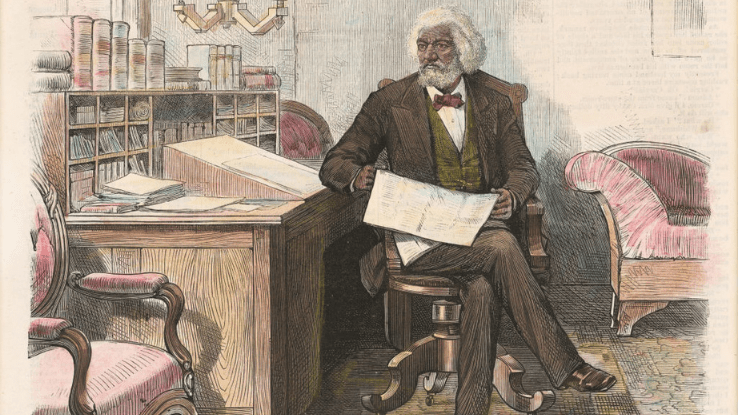
Douglass' career as a writer and Abolitionist blossomed in the 1840s. He spoke at the National Convention of Colored Citizens in 1843 and published his memoir,Narrative of the Life of Frederick Douglass, in 1845. This was an important achievement, equally it quieted arguments from opponents who did not believe that he had been slaveborn due to his eloquent speech.
Douglass wrote for and published several newspapers throughout his life, including Garrison'sThe Liberator and his own newspapers,The North Star andFrederick Douglass' Paper. Later in life, he took over theNew National Era, which was the final newspaper he published.
He attended the Woman's Rights Convention in 1848, becoming a life-long supporter of suffrage. Douglass became a recruiter for the U.s. Colored Troops when the U.s.a. Civil War broke out in 1863. At the decision of the war, he lobbied for the 14th Amendment (citizenship to slaves) and the 15th Subpoena (voting rights for Blacks).
Douglass was appointed every bit U.Southward. Align for the District of Columbia from 1877–1881 when President Harrison appointed him equally the Recorder of Deeds. He later served as the Consul General and U.S. Government minister to the Democracy of Haiti.
A Lasting Legacy
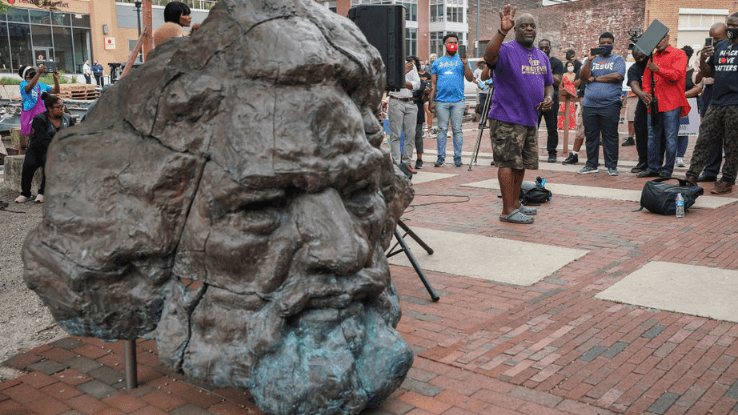
Frederick Douglass passed abroad on February 20th, 1895, but his legacy thrives to this day. He remains an Equal Rights icon, a pivotal effigy in Black history, and a attestation to the idea that anyone can accomplish great things.
Douglass fathered 5 children with Anna Murray—Rosetta, Lewis, Frederick Jr., Charles, and Annie Douglass—who went on to have children of their own. Some of Frederick Douglass' descendants are incredibly agile in social movements today.
Autobiography Of Frederick Douglass Sparknotes,
Source: https://www.reference.com/history/frederick-douglass-history?utm_content=params%3Ao%3D740005%26ad%3DdirN%26qo%3DserpIndex&ueid=d4d5436a-60a0-4ebd-be50-25c450b8daa0
Posted by: boardmorive.blogspot.com


0 Response to "Autobiography Of Frederick Douglass Sparknotes"
Post a Comment